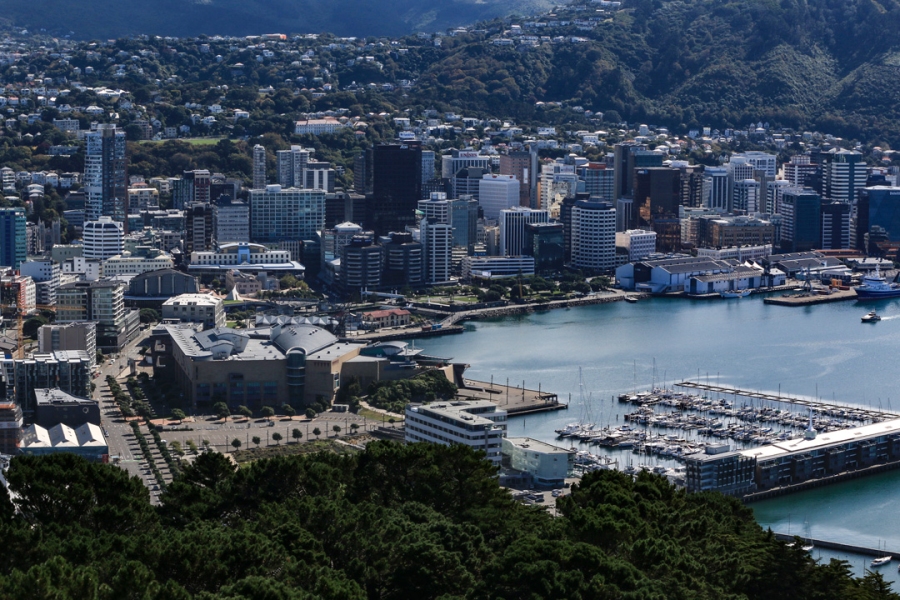Pollution levels in our main cities are continuing to fall as a result of the nationwide lockdown, says NIWA.
Air quality scientist Dr Ian Longley has analysed data from the third week of lockdown and found levels of nitrogen oxides, mostly caused by vehicle exhaust, have fallen between 83 and 91% of normal at most sites.
The reductions of these pollutants have been greater in the third week of lockdown compared to weeks one and two at all sites analysed by NIWA, with the exception of Queen St in Auckland and Wellington’s Willis St. However, reductions at these two sites have still been significant, Dr Longley says.
“Queen St, and most similar streets in Auckland’s city centre, is likely to be less affected by both additional Easter reductions in traffic and increased windiness. This is due to the continued operation of bus services in central Auckland and due to the relative sheltering from the wind that is provided by dense clusters of tall buildings. This may also be true to some degree for downtown Wellington.”
Nitrogen oxides (mainly traffic exhaust pollutants)
Changes in week-average NOx concentrations compared to the norm for this time of year (based on 2015-2019).
|
Week 1 (26th Mar – 1st Apr) |
Week 2 (2nd – 8th Apr) |
Week 3 (9th – 15th Apr) |
Week 1 - 3 combined |
|
|
Queen Street, AKL |
-61 % |
-59 % |
-59 % |
-60 % |
|
Henderson, AKL |
-65 % |
-67 % |
-89 % |
-74 % |
|
Takapuna, AKL |
-68 % |
-73 % |
-88 % |
-76 % |
|
Penrose, AKL |
-49 % |
-68 % |
-83 % |
-67 % |
|
Willis Str, WTN |
-76 % |
-74 % |
-54 % |
-68 % |
|
Riccarton Rd, CHC |
-79 % |
-78 % |
-91 % |
-83 % |
Meanwhile, the third week of lockdown has seen an increase in levels of particulate matter – or dust and sea salt – in Auckland compared to weeks one and two.
Dr Longley says was most likely due to the changes in the weather, with stronger winds dispersing exhaust pollutants more effectively, but lifting more particles into the air.
“It is too early to tell if changes in traffic volumes within the lockdown period, such as during the Easter holidays, or increases in home heating are also impacting air quality.”
Levels of PM10 (particulate matter) were still below normal at most sites in Auckland.
“We would normally expect PM10 to start rising in April due to the beginning of the home heating season, with more people at home for longer during lockdown there is a possibility of heating emissions being higher than normal this year.
“The impact of home heating on air quality is usually seen first in South Island due to colder temperatures. However, to date, PM10 levels are approximately normal for the time of year across the whole of South Island.”
Particulate matter concentrations
Changes in week-average PM10 concentrations compared to the norm for this time of year (based on 2015-2019).
|
Week 1 (26th Mar – 1st Apr) |
Week 2 (2nd – 8th Apr) |
Week 3 (9th – 15th Apr) |
Week 1 - 3 combined |
|
|
Queen Street, AKL |
-32 % |
-44 % |
-25 % |
-34 % |
|
Henderson, AKL |
-31 % |
-38 % |
-10 % |
-26 % |
|
Takapuna, AKL |
-45 % |
-42 % |
-10 % |
-32 % |
|
Penrose, AKL |
-26 % |
-39 % |
-13 % |
-26 % |
|
Glen Eden, AKL |
-26 % |
-30 % |
+14 % |
-13 % |
|
Papatoetoe, AKL* |
-36 % |
-37 % |
-7 % |
-27 % |
|
Patumahoe, AKL |
-18 % |
+1 % |
+8 % |
-3 % |
*based on one year of historic data only (2018)
Dr Longley said air quality at these levels were usually seen on Christmas Day and New Year’s Day but had not been seen at sustained levels over days and weeks since monitoring began about 20 years ago.
Related information:
- Steep improvements seen in Auckland air quality
- Air quality updates during Covid19 level restrictions
- More atmosphere news

